This address was originally delivered on January 16, 2020, at the event Free Exercise Equality: What It Means for International Religious Freedom, part of the Statesmanship and Religious Freedom Seminar hosted by RFI’s Center for Religious Freedom Education (CRFE).
To learn more about CRFE, visit: https://religiousfreedominstitute.org/crfe.
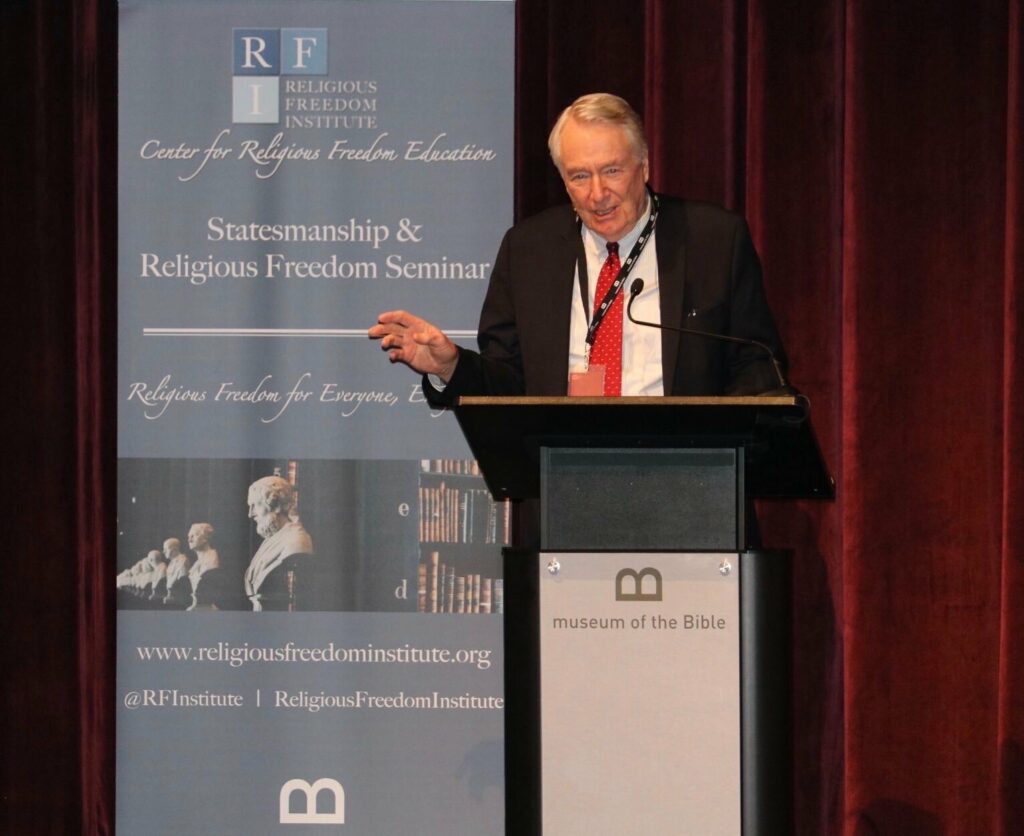
The topic chosen for this conference is extremely important, especially at this time when tensions over the relations of religion and politics are so very intense, both here and abroad. It is particularly helpful, I believe, to structure the discussion, as the organizers have done, around certain notable historical figures rightly identified in their way as statesmen or stateswomen who have advanced the cause of religious freedom, namely, Roger Williams, William Penn, Thomas Jefferson, and Eleanor Roosevelt. (These are the four I am responsible for in our proceedings from among the larger number of notables to be discussed at this conference.)
The idea of “statesman”—or in the case of Eleanor Roosevelt, “stateswoman”—may be taken to describe a public official regarded as dedicated, in theory and practice, to the pursuit of good government. And the term “religious freedom” may be taken to denote a moral and legal right freely to accept and avow fundamental convictions about what is true and right without coercive interference by the government or others, and freely to act upon those convictions within certain carefully prescribed legal limits. By “coercive interference,” I mean physical or material injury or damage, or penalties or restrictions backed by the threat of force imposed by the government or others. Official banning of certain people from entering a country primarily because of their religious beliefs or identity is an example of coercive interference in violation of the right of religious freedom by a government. Vigilante attacks on worshippers because of their religious beliefs or identity is an example of coercive interference in violation of the right of religious freedom by persons outside of government.
So understood, the four American notables—Williams, Penn, Jefferson, and Roosevelt—hold that being a statesman or stateswoman and protecting religious freedom are deeply interdependent. You cannot be dedicated to good government without endeavoring to protect religious freedom, and you cannot properly protect religious freedom without good government. Of course, there is more to what the notables think, just as what they think, and how they try to implement it, by no means all comes to the same thing. The four notables differed from one another in important ways. Still, by singling out the link between good government and religious freedom, we have identified some critically important common ground among them, common ground that is as consequential for us as it was for them.
The organizers were particularly wise to include Eleanor Roosevelt among the American notables to be considered. She qualifies unquestionably as a stateswoman because of what she accomplished as a first-time public official in the role of US delegate to the United Nations in 1946, and then, in 1947 and 1948, of chair of the Commission on Human Rights. Her presence on the UN delegation demonstrated her fervent dedication to the new world order represented by the UN Charter and the system of laws and institutions it authorized that aspired to safeguard the world from the unthinkable terror and abuse associated with the worldwide rise of fascism in the first half of the twentieth century. As chair of the Commission, Eleanor skillfully managed the complicated task of drafting of the Universal Declaration of Human Rights and she helped bring about its unanimous adoption by the UN General Assembly on December 10, 1948 (with eight abstentions: South Africa, Saudi Arabia, and the six members of the Soviet Bloc).[1]
In 1947, Secretary of State George Marshall expressed just how significant a role she played. He commended her for accomplishing “the principal objectives of the United States” and for bringing about “so large a measure of harmony…in the Drafting Committee,” achievements, he said, that are “matters of national gratification and a real tribute to your ability as the US Representative and Chairman.”[2] Fellow UN delegates, Arthur Vandenberg and John Foster Dulles, initially very skeptical of her lack of preparation and expertise, wound up speaking highly of her contribution.[3]
At the same time, it was, notably, the major shift in human rights policy announced in 1952 by Dulles, the new Secretary of State in the Eisenhower administration, that reinforced Eleanor’s decision to resign her post. An earlier supporter of human rights, Dulles now feared that human rights treaties would threaten US sovereignty and the rights of states to manage their affairs, including racial policies, as they saw fit. He also worried about undue Soviet influence in face of its growing prominence in the Cold War.[4]
In contrast, Eleanor retained her confidence that the Declaration embodied a valuable framework of good government linked indissoluably to the protection of religious freedom. Two passages from the Preamble to the Declaration summarize well the essence of that framework, highlighting it against the sinister background of the World War II experience that made it necessary. “Disregard and contempt for human rights have resulted in barbarous acts which have outraged the conscience of [humankind], and the advent of a world in which human beings shall enjoy freedom of speech and belief, and freedom from want and fear has been proclaimed as the highest aspiration of the common people.” “It is essential, if [human beings are] not to be compelled to have recourse, as a last resort, to rebellion against tyranny and oppression, that human rights should be protected by the rule of law.”
The mention of “freedom of speech and belief” and “freedom from want and fear” is, of course, a reference to the famous “four freedoms” first enumerated by President Franklin D. Roosevelt in his inaugural address of January 1941, and elaborated three years later in what came to called, the “second bill of rights.” FDR stressed that because “people who are hungry and out of a job are the stuff of which dictatorships are made,” the “new” social and economic rights must be defended with as great urgency as the well-established rights, freedom of speech and religion. Eleanor supported the inclusion of the “new” rights in the Universal Declaration,[5] and also gave special attention to guaranteeing religious freedom, considering it to be of underlying importance.[6]
The statement about protecting human rights by the rule of law in order to avoid being compelled to rebel against tyranny and oppression epitomizes the framework of good government that is inscribed in the Declaration and elaborated in the two subsequent human rights Covenants, one on civil and political rights, and the other on economic, social, and cultural rights, that become legally binding on consenting member states three decades later. Eleanor came to approve of the arrangement by which the Declaration was understood to state the principles, and the Covenants the law, emulating the relationship of the American Declaration of Independence to the US Constitution, an analogy she herself invoked.
But the major point is that these documents, taken in combination, provided the fundamental and universal standards of a just government. The documents could not be clearer on this point. The Declaration refers to itself as setting a “common standard of achievement for all peoples and all nations,” and the Covenants call attention to “the obligation of States under t
he [UN] Charter to promote universal respect for, and observation of, human rights and freedoms.”
Given that a chief function of the modern state is to monopolize the use of force, the Declaration and Covenants establish the basic standards according to which force may legitimately be used. The human rights system was explicitly designed as a set of legally enforceable rights and protections capable of preventing the reappearance of autocratic government and the exercise of arbitrary force, which may be defined (minimally) as the infliction of death, destruction, severe pain or suffering, for self-serving reasons. Recall that Hitler rose to power on the strength of Article 48—the emergency article—of the Weimar Constitution. On nothing more than Hitler’s say-so, it permitted the suspension of civil rights “with almost no limit,” including extensive censorship and restrictions on freedom of the press, widespread searches and seizures, secret and unlimited detentions, and the establishment of irregular tribunals to prosecute individuals suspected of threatening national security. In effect, Hitler was authorized to use police power to intimidate and suppress all opposition.
We may say that the entire human rights corpus was a response to Hitler and other fascists’ massive abuse of an appeal to public emergency. For example, Article 4 of the International Covenant on Civil and Political Rights imposes both stringent conditions of notification and authorization on states claiming a threat of public emergency and a set of nonderogable rights (rights that may not be suspended under any conditions, even in the name of national security). That set of rights prohibits discrimination on grounds of race, religion, gender, national origin, etc. even during times of emergency; it also categorically prohibits extrajudicial killing; torture and cruel, inhuman, or degrading treatment or punishment; enslavement; denials of due process, and (of special interest to us) the freedom of conscience, religion, or belief. Both the conditions and the rights were systematically and relentlessly violated by the Hitler regime and other fascists before and during World War II. Scholarship has shown that the rights as expressed in the documents were consciously formulated against just such a background. In that way, rights came from wrongs.
As regards the framework of good government represented by the Declaration and Covenants, we should add that the drafters attributed special importance to civil and political rights like freedom of expression, association, and participation in government, since they “are universally the first thing dictators will seek to deny and destroy,” as one commentator puts it.[7]
It is of the greatest importance that Article 18 of the Declaration and the Covenant on Civil and Political Rights—the right to freedom of thought, conscience, religion, or belief—is included among the nonderogable rights. That is because a key feature of arbitrary force as practiced by the fascists was the unsparing imposition by force of a specific set of beliefs on everyone under their control, meaning the persecution of all religious (and other) expressions of dissent. Such actions were arbitrary because the threat of coercion is not a justification for believing the truth or rightness of anything. Saying, ‘believe what I tell you or I’ll punish you’ fails, glaringly, to give any reasons for accepting a belief. At bottom, conscience, religion or belief involve fundamental convictions about truth and rightness, and are subject, in traditional language used by Williams, Penn, and Jefferson, to “the law of the spirit”—persuasive appeals to reason, emotion, and evidence—and not to the “law of the sword.”
This rationale underlies Article 18, paragraph 2 of the Covenant on Civil and Political Rights, which states that “no one shall be subject to coercion which would impair [one’s] freedom to have or to adopt a religion or belief of [one’s] choice.” According to the authoritative Human Rights Committee, Article 18 “protects theistic, nontheistic and atheistic beliefs, as well as the right not to profess any religion or belief.” Moreover, Article 18 distinguishes between belief and practice, or “manifestation,” as it is called, such that holding or avowing a conviction may in no way be limited, while manifesting or putting a belief into practice is subject only to such limitations as are prescribed by law and are necessary to protect the public safety, order, health, or morals, or the rights and freedoms of others.
We should also stress that along with the inclusion of nonreligious convictions, Article 18 is interpreted to encompass a wide variety of religious beliefs and practices. For one thing, the right to adopt a religion of one’s choice is not exclusively individualistic or private. It applies “either individually or in community with others and in public or private[…].” For another, according to the Human Rights Committee, the Article is “not limited…to [mainstream] religions or to religions and beliefs with institutional characteristics or practices analogous to those of [mainstream] religions. The Committee therefore views with concern any tendency to discriminate against any religion or belief for any reasons, including the fact that they are newly established, or represent religious minorities that may be the subject of hostility by a predominant religious community.” Nor is the notion of religious practice narrowly understood. According to the Committee, it “extends to ritual and ceremonial acts giving direct expression to belief, as well as various practices integral to such acts, building places of worship, the use of ritual formulae and objects, the display of symbols…The observance and practice of religion may include[…]such customs as[…]dietary regulations, the wearing of distinctive clothing or head coverings, participation in rituals associated with certain stages of life[…].”[8]
It is worth reemphasizing that there is empirical support for the idea that the right to religious freedom does not stand alone, but is interwoven with the protection of other human rights and with the broader practice of good government we have been discussing. Statements from two important studies of these matters substantiate that conclusion. One is from a book on the protection of religious freedom against persecution perpetrated by states and others. The authors write that
although our focus has been on religious freedoms, these freedoms are embedded within a larger bundle of civil liberties…Our analysis of the most recent data…graphically displays the relationships that religious freedoms hold with the other civil liberties and the well-being of residents in various countries. The association between religious freedoms and other civil liberties, press freedoms, and political freedoms are especially striking. The highly significant and strong correlations…suggest that the freedoms are closely intertwined.[9]
The other is from a study of the implementation of human rights around the world:
It is liberal democracy…that is essential for rights protection, where [mechanisms] of accountability are enshrined in constitutionalism and the rule of law, [and therefore] where rights abuses cannot take place with impunity.[10]
It must be admitted, of
course, that the system of constitutional democracy correlative with the framework of good government implied in the Declaration and Covenants is, after all, only a framework. That means that individual states have discretion as to how to implement the terms of the framework, and that, consequently, the structure of government in different locations will take different forms. Nevertheless, the framework constitutes common standards of accountability intended to apply universally.
There is one last point to be made about the grounds on which human rights, including the right to religious freedom, are justified, a point of special interest to Eleanor Roosevelt. In the drafting process, considerable controversy surrounded the question of whether the Declaration should make overt reference to God as the proper foundation of human rights. Charles Malik, a Lebanese Christian and influential voice on the committee, argued as much, and believed that promoting religious freedom properly opened the door to new opportunity for Christian missions, a view shared by many Christians at the time, as well as by other delegates. The Dutch representative suggested wording to the effect that the inherent dignity and the equal and inalienable right of all human beings is “based on man’s divine origin and immortal destiny.” Adding these sentiments would, he claimed, “give satisfaction to the majority of the world’s population, which…still believed in the existence of a supreme Being.”
These proposals were eventually withdrawn for lack of votes, indicating concerted majority opposition.[11] While Eleanor was at first sympathetic with the proposals, she came around to joining the opposition, and helped move things in their favor. Explaining later why the Declaration contained no reference to God, she said:
Now, I happen to believe that we are born free and equal in dignity and rights because there is a divine Creator, and there is a divine spark in [us]. But, there were other people around the table who wanted it expressed [so] that they could think in their [own] particular way about this question[;]…finally, these words were agreed on because they…left it to each of us to put in our own reason, as we say, for [believing that human beings are born free and equal in dignity and rights].[12]
What she is stating here is, as far as it goes, completely consistent with Article 18 of the Declaration and the Covenant on civil and political rights. Under the terms of the Article, anyone is free to avow a religious basis for the equal dignity and rights of all human beings as that person sees fit. Such a belief—whether Christian, Muslim, Buddhist, Jewish, etc.—is fully protected. We all have a right, using Eleanor’s language, “to put in our own reason” for believing in universal dignity and rights. What is not protected, or course, is that any such religious belief be granted special official, legally-enforced privileges in comparison with other beliefs. It is, indeed, hard to see how giving special legal privileges to one religion or group of religions over others, or, for that matter, over other nonreligious fundamental conviction, could be consistent with Article 2 of the Declaration and Covenants. That Article categorically outlaws discrimination on grounds of religion, among other things.
But what Eleanor might have gone on to add is that there exists beneath all these many and varied particular religious and other reasons a prior universal reason common to all people as to why religious freedom stands as an equal right for everyone. That is, as we suggested, because of the rock-bottom conceptual gap between coercion and conviction. As we put it earlier, the threat of coercion is not a justification for believing the truth or rightness of anything. Trying to compel people to believe something is incoherent; it is the height of irrationality. It constitutes an exercise of what we called, arbitrary force. Of course, coercion by a government or others is not without its effects. We can all be deterred or constrained from acting consistent with our heartfelt convictions. Human history right up to the present, is littered with examples. But to be deterred or constrained is not to be convinced. Human history right up to the present also abounds with examples of conscientious resistance.
Of our three other American notables, Roger Williams grasped this point most consistently. (I have time to mention only him.) He announced unequivocally that the “power, might or authority” of earthly governments “is not religious, Christian, etc., but natural, humane and civil.”[13] He grounded that claim on a belief in natural rights, a belief that assumes that human beings are, to begin with, “rational, self-aware, and morally responsible,” independent of any particular religious revelation or insight. As such, they are taken, above all, to have a native capacity to identify and react to the blatant moral wrongness of arbitrary force, whether in the form of compelled belief or of the infliction of death, destruction, injury, or severe pain and suffering for self-serving reasons.[14]
Assumed here, in other words, is the basic moral right of self-defense, which was regarded in the natural rights tradition as “the greatest of rights”—namely, “a natural inalienable right that inhered in individuals and communities [and]…that could be exercised by subjects against a tyrannical ruler.”[15] It is, of course, exactly this kind of thinking that underlies the words from the Preamble to the Declaration we quoted earlier: “It is essential, if [human beings are] not to be compelled to have recourse, as a last resort, to rebellion against tyranny and oppression, that human rights should be protected by the rule of law.” As we emphasized, the human rights system of good government is only understandable in the light of Nazi and other fascist aspirations, driven, as they were, by a consuming passion for self-serving power.
In his own way, Roger Williams endeavored heroically, against enormous odds, to act as statesman. He occupied several official positions in the primitive Rhode Island government, and, in the spirit of a proper statesman, he labored, at considerable financial and physical cost to himself, to acquire several charters from the English crown that would implement his ideal of good government, a “democraticall” system, as it was spoken of, dedicated to protecting “the natural and civil rights and liberties” of all citizens, in Williams’s words. Though it was never free of dissension and instability, and though it suffered setbacks after Williams’s death, the Rhode Island government, under Williams’s leadership, represents “the first commonwealth in modern history to make religious liberty…a cardinal principle of its corporate existence and to maintain separation of church and state on these grounds.”[16] In doing that, he supported his natural rights position with extensive arguments from Christian scripture and history. He was and always remained, to be sure, a committed Christian. At the same time, he regarded his religious arguments as supplementary to his appeals to reason and nature; not as substitutes for them.
In a brief and rather cursory exposition, I have alluded to two of the American notables, taken by the organizers as exemplars of the relationship of statesman—or stateswo
man—ship and religious freedom. I have devoted special attention to Eleanor Roosevelt because, in my view, the human rights system, with its elaborate protection of religious freedom, that she advocated and so critically helped to bring about, stands as the culmination of the best in the natural rights tradition, a tradition embraced not only by forerunners like Williams, but also by Penn and Jefferson, in their own ways. Linking a vision of good government with the protection of religious freedom in the way these figures have done is a combination, in my view, well worth preserving.
References:
[1] See Mary Ann Glendon, A World Made New: Eleanor Roosevelt and the Universal Declaration of Rights (New York: Random House, 2001) for an enlightening account of Eleanor’s role in and contribution to the formulation and adoption of the Declaration.
[2] Cited in John S. Nurser, For All Nations and All Peoples: The Ecumenical Church and Human Rights (Washington, DC: Georgetown University Press, 2005), 157, fn. 15.
[3] Glendon, World Made New, 30.
[4] Ibid., 205-207. See Natalie Hevener Kaufman, Human Rights Treaties and the Senate: A History of Opposition (Chapel Hill, NC: University of North Carolina Press, 1990), 52ff. for a discussion of opposition of Southern segregationists to human rights treaties.
[5] Glendon, World Made New, 43.
[6] See Nurser, For All Nations and All Peoples, ch. 9, “Finding a Text.”
[7] Johannes Morsink, The Universal Declaration of Human Rights: Origins, Drafting, and Intent (Philadelphia: University of Pennsylvania Press, 1999), 69.
[8] United Nations Human Rights Committee, General Comment No. 22 (48) (Article 18); https://www.refworld.org/docid/453883fb22.html.
[9] Brian J. Grim and Roger Finke, The Price of Freedom Denied: Religious Persecution and Conflict in the 21st Century (New York: Cambridge University Press, (2011), 205.
[10] Todd Landman, Protecting Human Rights: A Comparative Study (Washington, DC: Georgetown University Press, 2008), 168-69.
[11] See discussion of these matters in Morsink, Universal Declaration, 284-290.
[12] Cited in Glendon, World Made New, 147.
[13] Roger Williams, Complete Writings (New York: Russell & Russell, 1963), vol. 3, 398.
[14] See David Little, Ch. 9, “Roger Williams and the Puritan Background of the Establishment Clause,” in Essays in Religion and Human Rights: Ground To Stand On (New York: Cambridge University Press, 2015);” Sumner B. Twiss, “Roger Williams and Freedom of Conscience and Religion as a Natural Right,” in Religion and Public Policy: Human Rights, Conflict, and Ethics, Sumner B. Twiss, Marian Gh. Simion, and Rodney L. Petersen, eds. (New York: Cambridge University Press, 2015).
[15] Brian Tierney, The Idea of Natural Rights: Studies on Natural Rights, Natural Law and Church Law, 1150-1625 (Atlanta, GA: Scholars Press, 1997), 314.
[16] Sidney E. Ahlstrom, A Religious History of the American People (New Haven: Yale University Press, 1972), 182.
David Little is Research Fellow at Georgetown University’s Berkley Center for Religion, Peace, and World Affairs and former professor at Harvard Divinity School and Senior Scholar at the U.S. Institute of Peace.
THE RFI BLOG
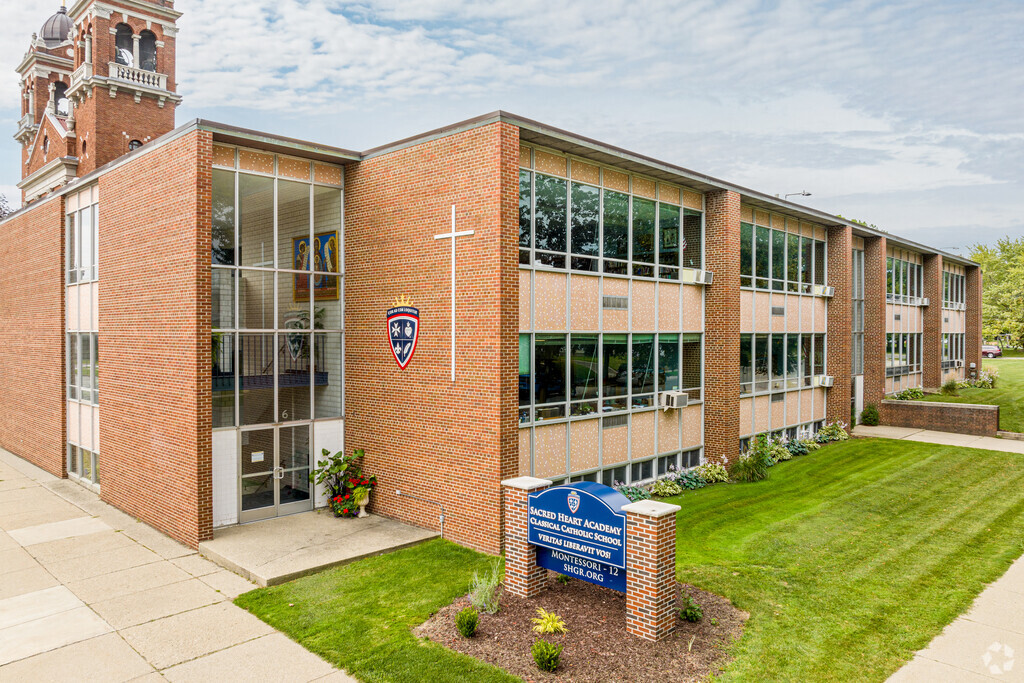
Be More Faithful, Become More Resilient: An Invitation to Religious Institutions

How Soccer Reveals Different Meanings Of ‘Secular’ In France And The US
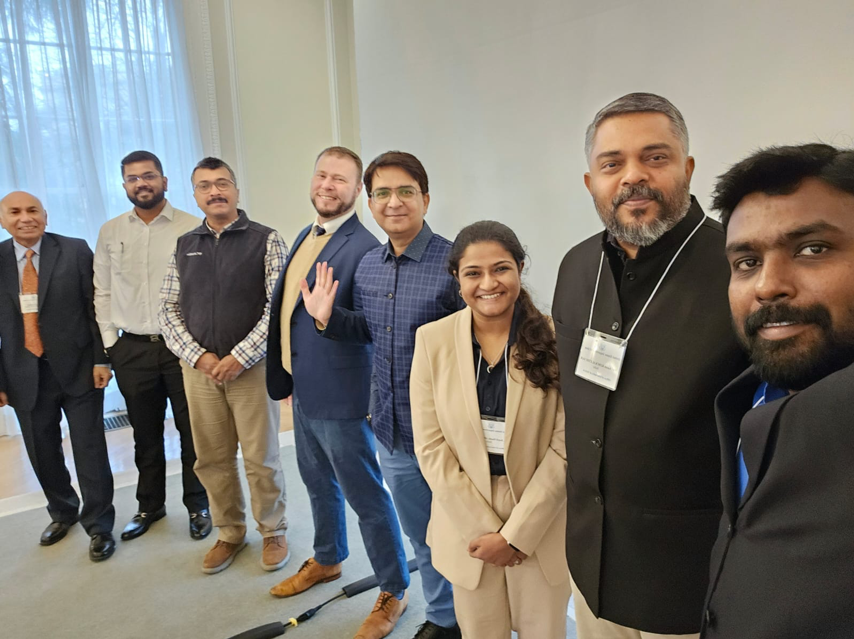
RFI’s Ismail Royer Meets with Delegation from India
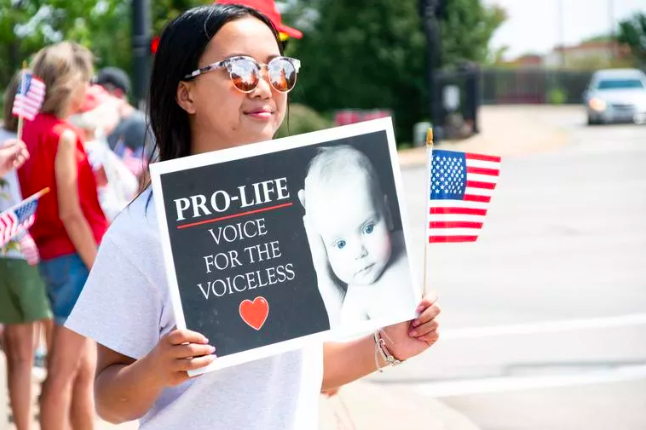
Protecting the Unborn, Mothers, and Medical Ethics: The Stakes of Arkansas’ Amendment
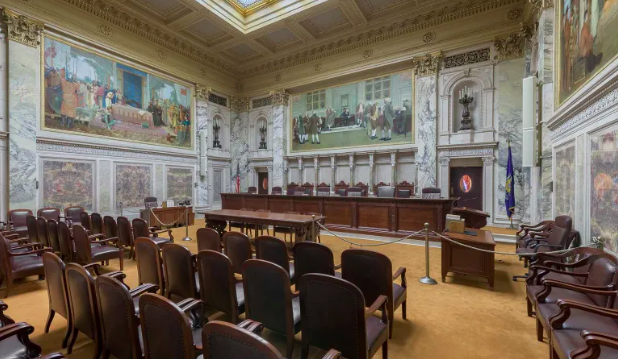
Wisconsin Supreme Court Punishes Catholic Charities for Serving Everyone
CORNERSTONE FORUM

Public Bioethics & the Failure of Expressive Individualism

Religious Liberty in American Higher Education

Scotland’s Kate Forbes and the March of Secularism

70 Years of Religious Freedom in Sweden: Prospects and Challenges

